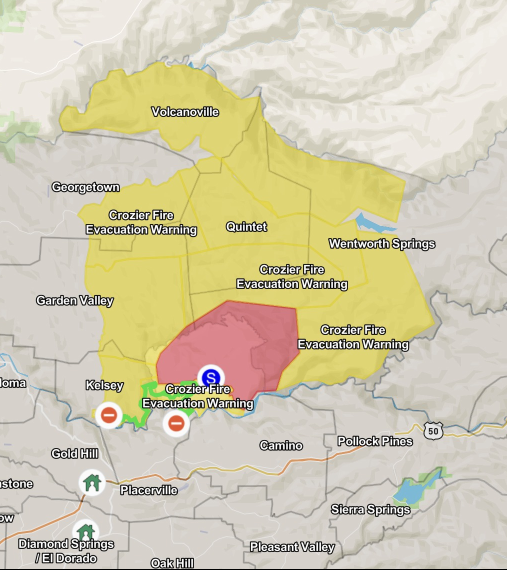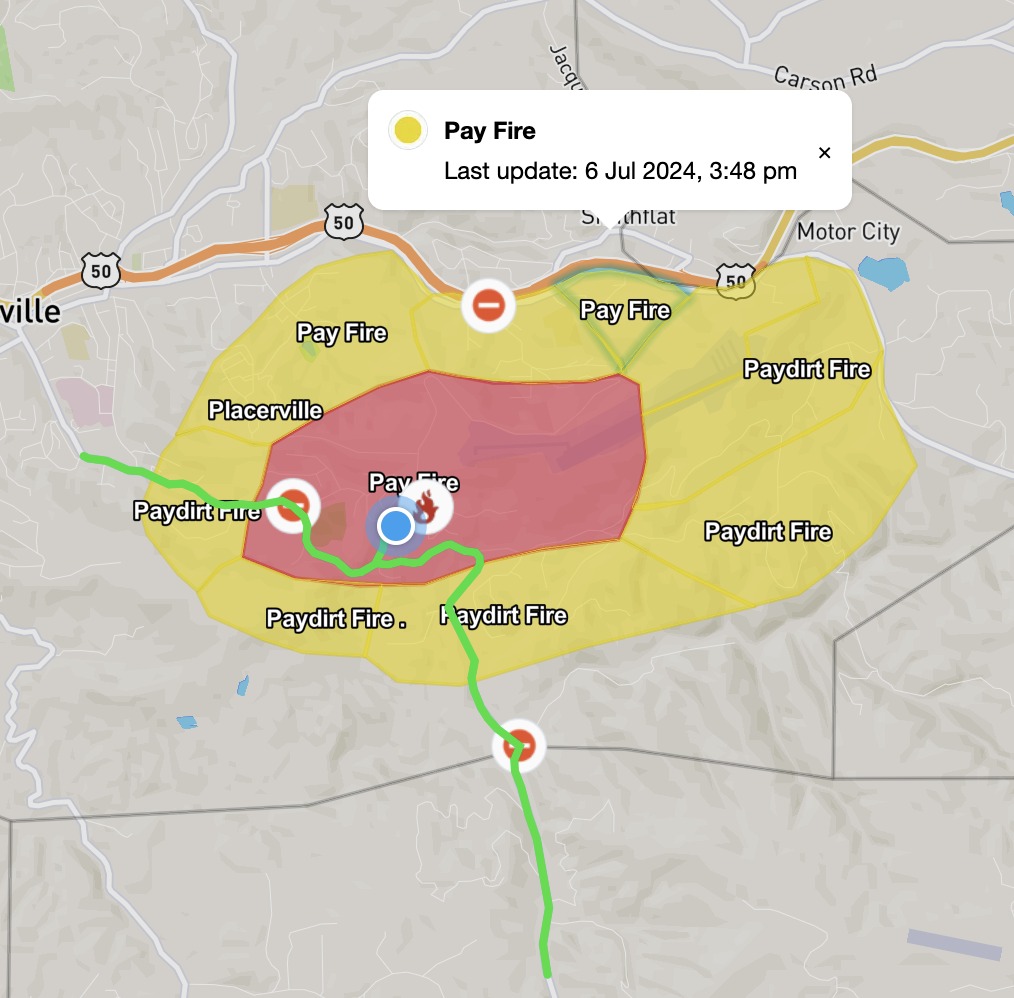Know the Difference
Understanding the difference between an evacuation warning and an evacuation order can save lives. A warning means conditions are changing, and you should be ready to leave at a moment’s notice. An order means you must leave immediately.

WARNING
(Yellow Zone)
🔶 What is an Evacuation Warning?
An Evacuation Warning is issued when there is a potential threat to life or property, and conditions could worsen quickly. While evacuation is not yet mandatory, this is your chance to prepare to leave safely and early.
What to Do When You Receive a Warning:
- Start preparing immediately. Gather your emergency go-bag, medications, important documents, pets, and essential items.
- Stay informed. Monitor trusted sources like Ready.EDSO.org, official social media channels for updates.
- Fuel your vehicle and check your evacuation routes in case roads close or conditions change.
- Communicate your plan. Let family and friends know you may evacuate, and decide where you’ll go if an order is issued.
- Leave early if you feel unsafe. Do not wait for an order if you feel conditions are deteriorating—early evacuation is always safer.
- Gives people who need more time to evacuate (elderly, disabled, large animals) more time to do so, and it decreases the traffic on roads
⚠️ Remember: A warning can quickly turn into an Evacuation Order. Being ready to go gives you more control and more time.

ORDER
(Red Zone)
🔴 What is an Evacuation Order?
An Evacuation Order is issued when there is an immediate threat to life. This is a mandatory directive: you must evacuate the area without delay. First responders may not be able to assist you if you choose to stay.
What to Do When You Receive an Order:
- Leave immediately. Do not wait to pack more belongings or finish tasks. Time is critical.
- Follow designated routes. Use official evacuation routes and avoid shortcuts, which may be blocked or dangerous – see PerimeterMap.com for real-time information
- Do not delay. Emergency conditions (like fire, flood, or hazardous materials) can change quickly and cut off access.
- Help others if you can. Check on neighbors, especially those who may need help evacuating.
- Stay informed. Continue to follow updates through Ready.EDSO.org and official social media.
🚨 Refusing to leave during an evacuation order puts your life—and the lives of first responders—at risk. Emergency personnel may not return to assist once an order is issued.
